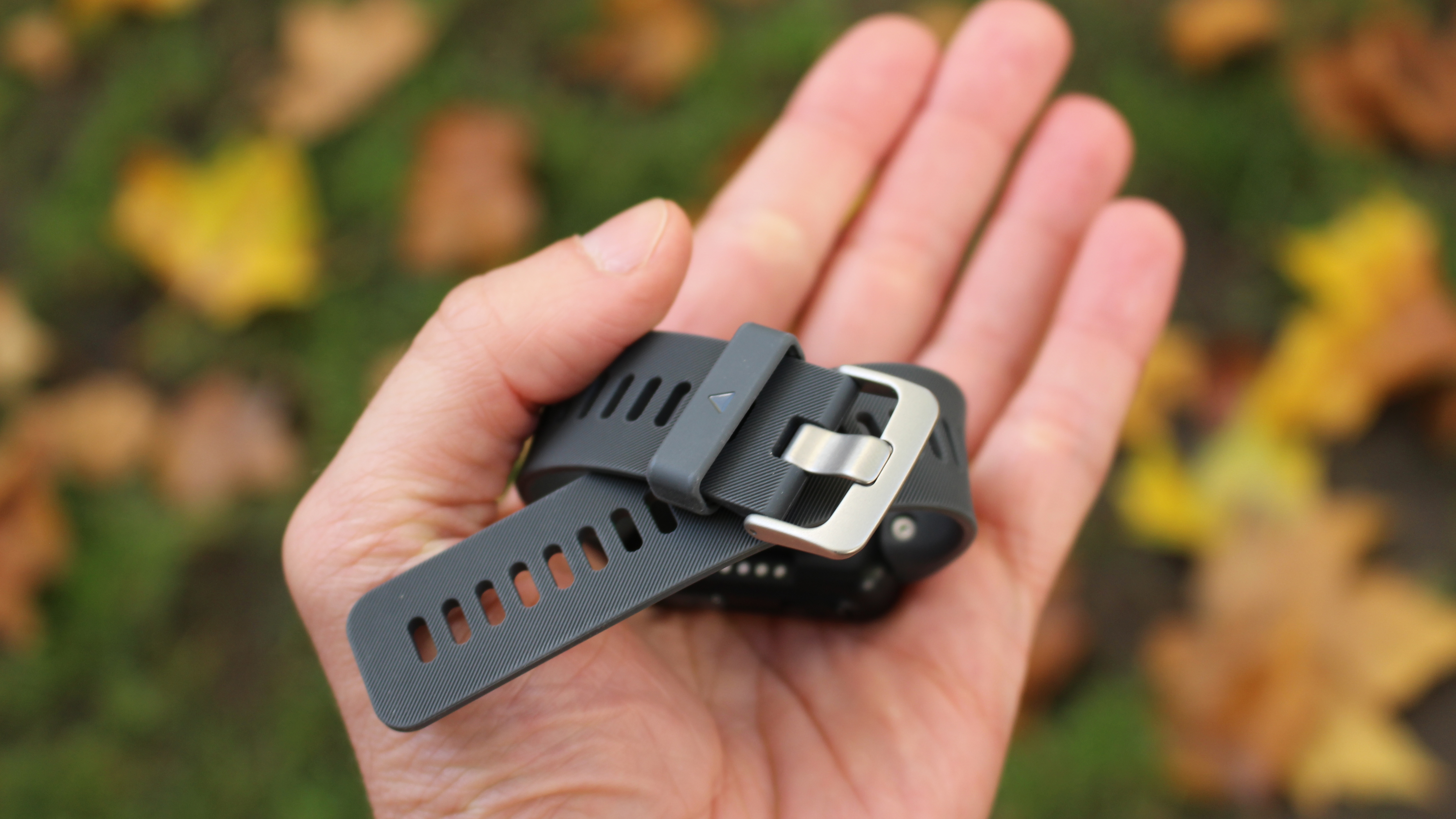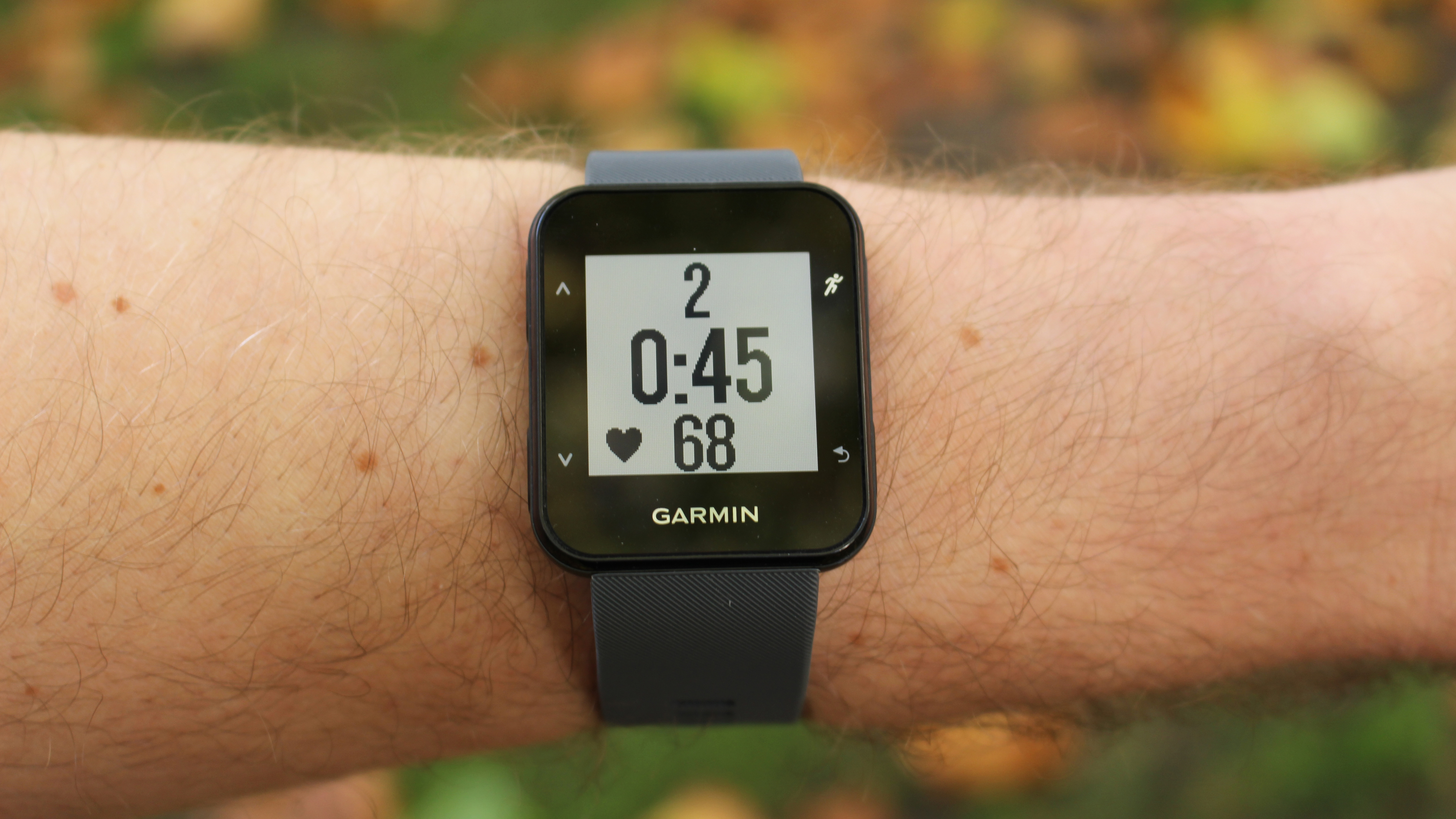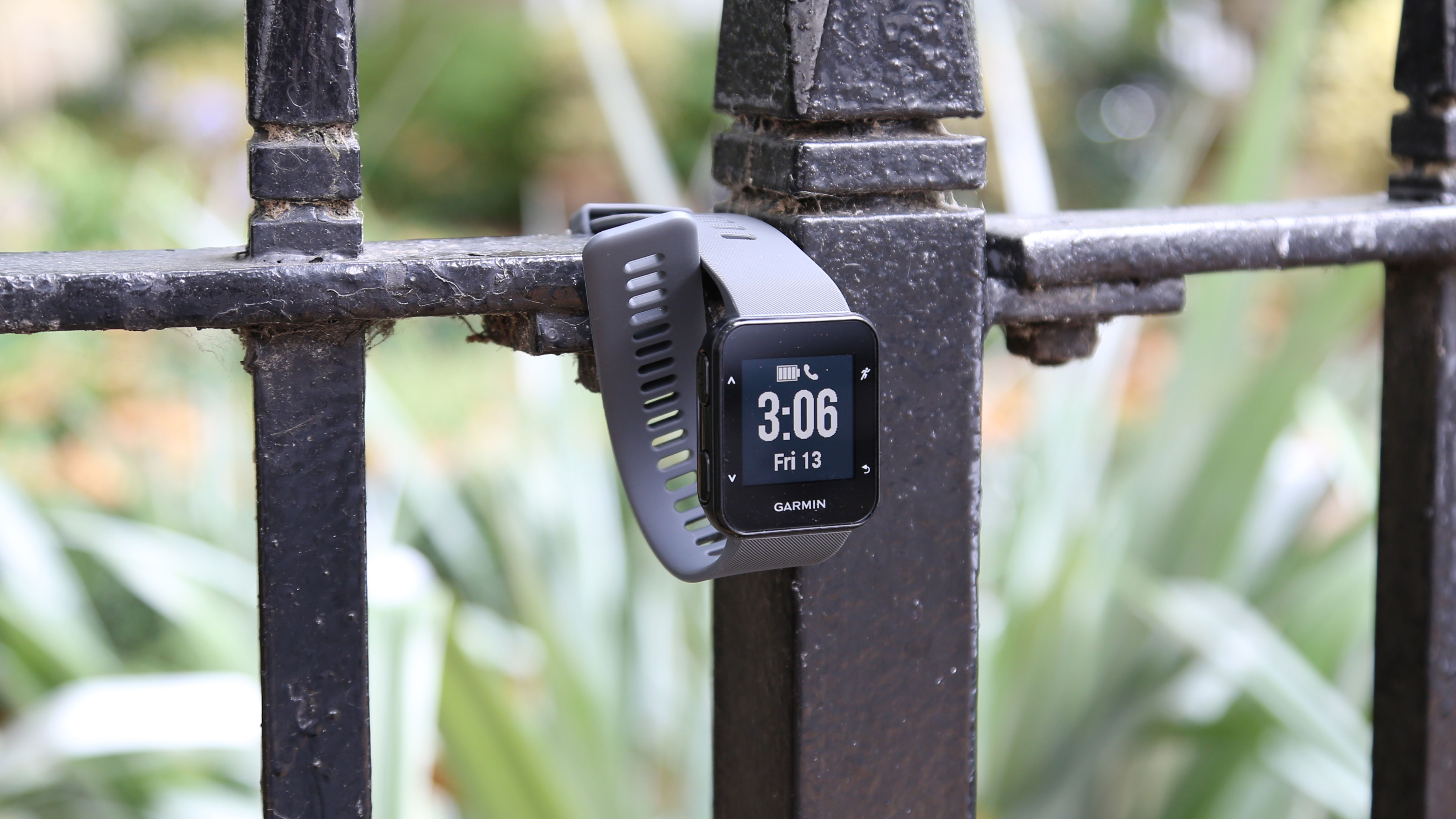TechRadar Verdict
The Garmin Forerunner 30 is a pared-back version of the Forerunner 35, and while it lacks some of the more advanced features of its bigger sibling, Garmin has got the balance right to still leave the 30 feeling well-rounded and impressive.
Pros
- +
Clear screen
- +
Intuitive controls
- +
Great app
Cons
- -
Design definitely fitness-focused
- -
No touchscreen
- -
Move IQ isn’t capable enough yet
Why you can trust TechRadar
With the Forerunner 30, Garmin has launched yet another running watch to add to its already impressive collection. Confusingly, the 30 is actually a more recent version of the Garmin Forerunner 35.
The reason for the lower number is that the Garmin Forerunner 30 is actually a pared-back version of the 35. Garmin describes it as a “simple-to-use running watch with wrist-based heart rate”.
It may be pared back, but Garmin has done a great job of removing more advanced features without leaving the Forerunner 30 feeling sparse.
It still has heart rate monitoring, GPS tracking, overall fitness metrics in the form of Vo2 max (measuring the oxygen levels in your blood to gauge how well your body metabolizes oxygen), and even has basic smartphone features in call notifications and message previews.

The feature we were really excited about was Move IQ, which it’s claimed can automatically detect the type of exercise you’re doing. It’s a trade-off from the slimming down process that swaps manually selecting fitness mode for machine learning.
The paring back has undoubtedly made the Garmin Forerunner a more streamlined device, but is it too pared back?
Garmin Forerunner 30 price and release date
The Garmin Forerunner 30 is available right now in Europe in Black, Turquoise and Amethyst, and sits solidly in the mid-range price bracket at £129.99.
Sign up for breaking news, reviews, opinion, top tech deals, and more.
At the moment Garmin seems to have no plans to extend the Forerunner 30 to other regions, but should that change we’ll let you know.
Design
The design of the Garmin Forerunner 30 is exactly the same as that of the 35: a glass rectangle, with thick bezels surrounding a 0.93-inch diameter screen. On the sides are four buttons for navigating the menus (up, down, run, and previous screen).
The screen is incredibly clear, and in comparison to thinner devices like the Fitbit Alta HR, there’s plenty of screen real estate for displaying all your metrics, which is particularly important mid-run when you’ve got sweat in your eyes and want to quickly glance at your device.
The unit itself is relatively thick, needing as it does to fit in the buttons, the electrics, and the sensors on the underside. This becomes a bit of an issue when it comes to sleep tracking as we found it a distracting presence, causing us to wake up in the night.



The unit is held on your wrist with silicone straps, connected using a metal clasp and a loop that holds down the surplus strap. When putting it on, we often found that this loop caught our arm hairs which was pretty unpleasant, although by no means a deal-breaker.
The Garmin Forerunner 30 is definitely one of Garmin’s more fashionable units, but still looks very much like a run-tracker – the boxy shape and large on-screen text would look incongruous with a nice suit or on a night out.
The benefits of the large clear text massively outweigh the negatives, though – it’s easy to read, and the combinations of icons, numbers and labels mean you’re never in any doubt about what you’re looking at. It’s ideal if you’re trying to work in a specific heart rate zone, or aiming for a specific pace per mile and don’t want to spend the entire time staring at your wrist.

The interface, both on the app and on the watch itself, is detailed without being convoluted, and the app offers a great range of features including steps, running, swimming, cycling, strength training, sleep tracking, weight tracking, and more. We’ll look at how the app works in greater depth a little later.
The watch itself is less complex, but still shows heart rate, calories burned, steps, notifications, intensity minutes, and more.
It sounds like a lot, and it is, but it doesn’t feel overwhelming, which is testament to Garmin’s experience in this field.
- Find the best deals on Garmin products with our Garmin promo codes.

Andrew London is a writer at Velocity Partners. Prior to Velocity Partners, he was a staff writer at Future plc.
